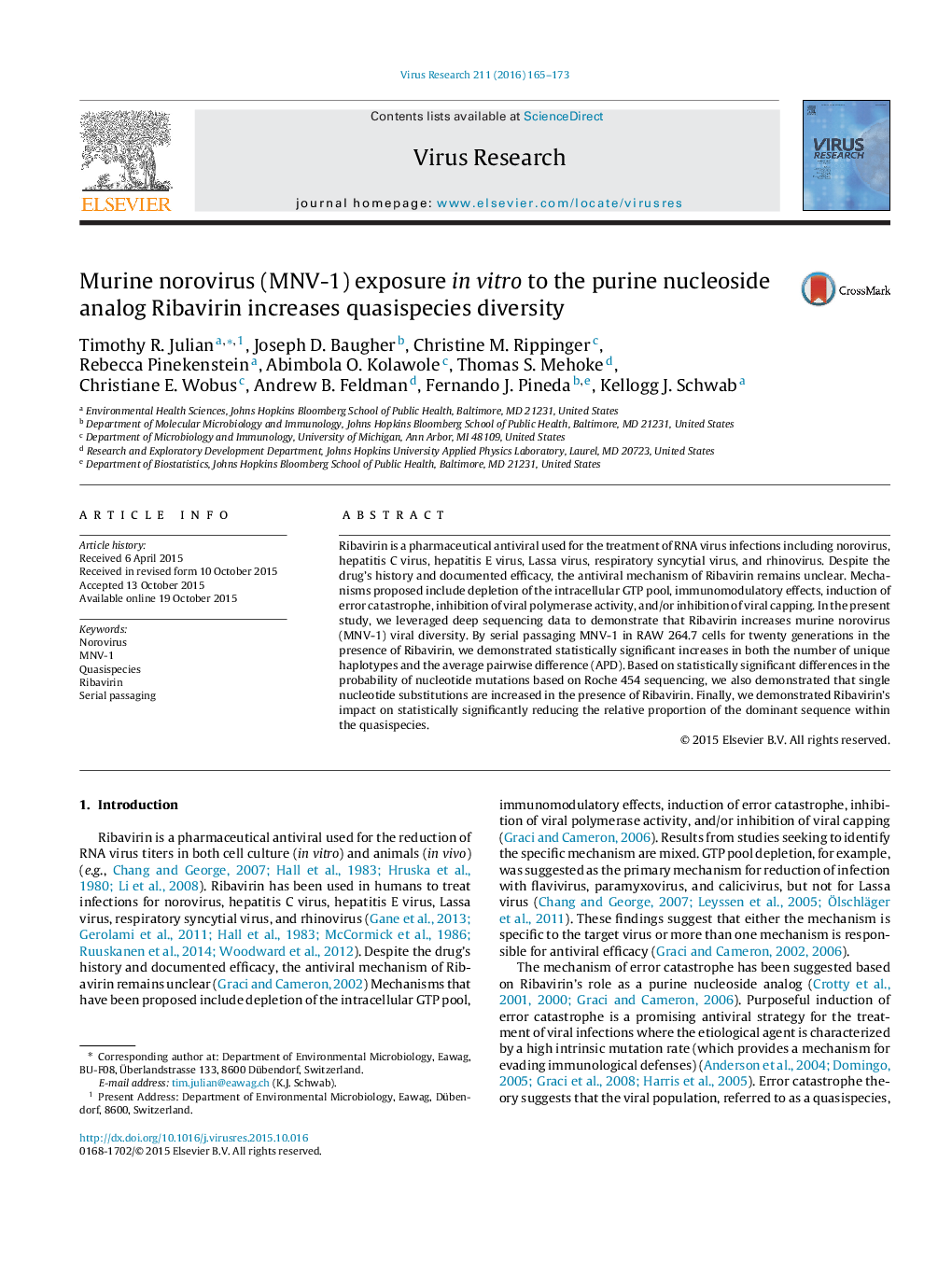| Article ID | Journal | Published Year | Pages | File Type |
|---|---|---|---|---|
| 3427987 | Virus Research | 2016 | 9 Pages |
•Exposure to Ribavirin statistically significantly increases Mouse Norovirus (MNV-1) quasispecies diversity.•Ribavirin-induced nucleotide substitutions are estimated using time series of site-dependent nucleoside-composition vectors.•Observed mutations in MNV-1 due to Ribavirin treatment cannot only be explained by activity as nucleoside analog inhibitor.
Ribavirin is a pharmaceutical antiviral used for the treatment of RNA virus infections including norovirus, hepatitis C virus, hepatitis E virus, Lassa virus, respiratory syncytial virus, and rhinovirus. Despite the drug's history and documented efficacy, the antiviral mechanism of Ribavirin remains unclear. Mechanisms proposed include depletion of the intracellular GTP pool, immunomodulatory effects, induction of error catastrophe, inhibition of viral polymerase activity, and/or inhibition of viral capping. In the present study, we leveraged deep sequencing data to demonstrate that Ribavirin increases murine norovirus (MNV-1) viral diversity. By serial passaging MNV-1 in RAW 264.7 cells for twenty generations in the presence of Ribavirin, we demonstrated statistically significant increases in both the number of unique haplotypes and the average pairwise difference (APD). Based on statistically significant differences in the probability of nucleotide mutations based on Roche 454 sequencing, we also demonstrated that single nucleotide substitutions are increased in the presence of Ribavirin. Finally, we demonstrated Ribavirin's impact on statistically significantly reducing the relative proportion of the dominant sequence within the quasispecies.
